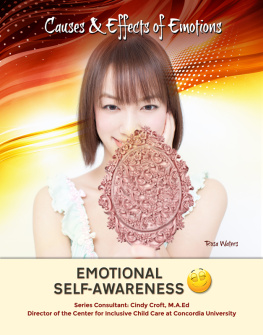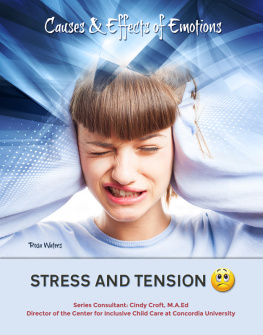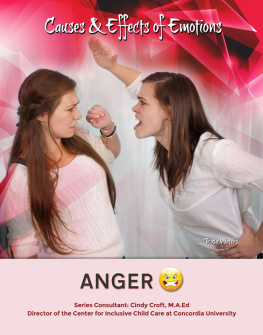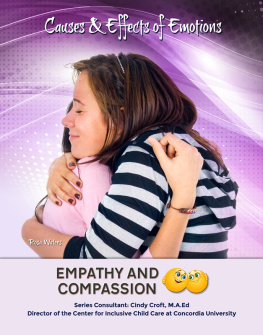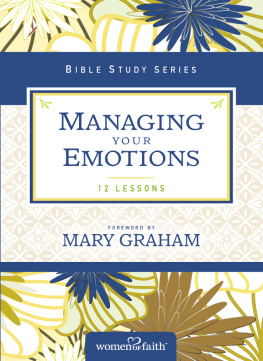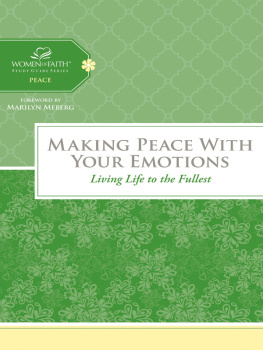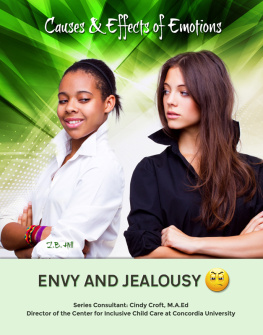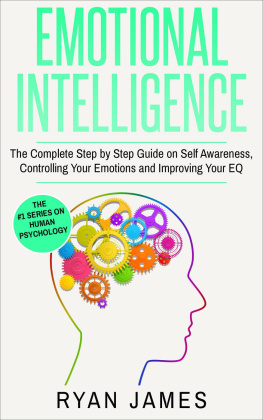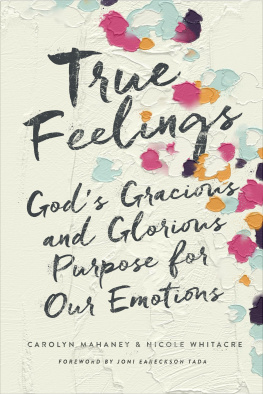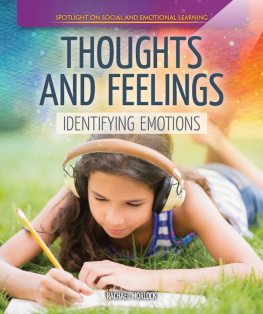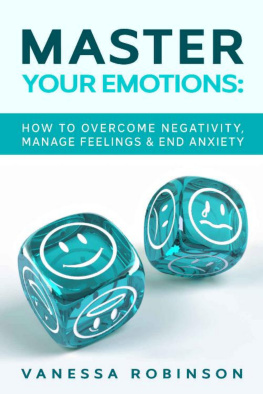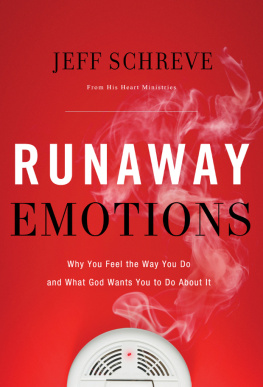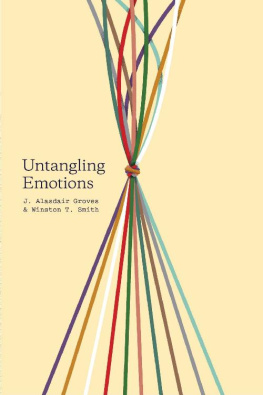Emotional
Self-Awareness
CAUSES & EFFECTS
OF EMOTIONS

Embarrassment, Shame, and Guilt
Happiness
Fear and Anxiety
Romantic Attraction
Anger
Optimism and Self-Confidence
Stress and Tension
Sadness
Empathy and Compassion
Envy and Jealousy
Surprise and Flexibility
Emotional Self-Awareness
Loneliness
CAUSES & EFFECTS
OF EMOTIONS

Emotional
Self-Awareness
Rosa Waters

Mason Crest

| Mason Crest
450 Parkway Drive, Suite D
Broomall, PA 19008
www.masoncrest.com |
Copyright 2015 by Mason Crest, an imprint of National Highlights, Inc. All rights reserved. No part of this publication may be reproduced or transmitted in any form or by any means, electronic or mechanical, including photocopying, recording, taping, or any information storage and retrieval system, without permission from the publisher.
Printed and bound in the United States of America.
First printing
9 8 7 6 5 4 3 2 1
Series ISBN: 978-1-4222-3067-1
ISBN: 978-1-4222-3070-1
ebook ISBN: 978-1-4222-8763-7
The Library of Congress has cataloged the hardcopy format(s) as follows:
Library of Congress Cataloging-in-Publication Data
Waters, Rosa, 1957
Emotional self-awareness / Rosa Waters.
pages cm. (Causes & effects of emotions)
Includes index.
Audience: Age 12+
Audience: Grade 7 to 8.
ISBN 978-1-4222-3070-1 (hardback) ISBN 978-1-4222-3067-1 (series) ISBN 978-1-4222-8763-7 (ebook) 1. Emotions in adolescence Juvenile literature. 2. Emotions in childrenJuvenile literature I. Title.
BF724.3.E5W38 2015
152.4dc23
2014004379
CONTENTS
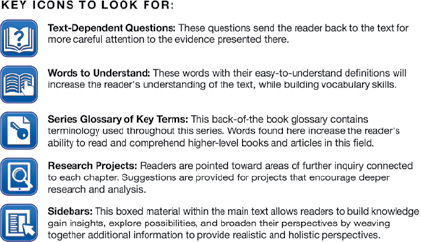
The journey of self-discovery for young adults can be a passage that includes times of introspection as well joyful experiences. It can also be a complicated route filled with confusing road signs and hazards along the way. The choices teens make will have lifelong impacts. From early romantic relationships to complex feelings of anxiousness, loneliness, and compassion, this series of books is designed specifically for young adults, tackling many of the challenges facing them as they navigate the social and emotional world around and within them. Each chapter explores the social emotional pitfalls and triumphs of young adults, using stories in which readers will see themselves reflected.
Adolescents encounter compound issues today in home, school, and community. Many young adults may feel ill equipped to identify and manage the broad range of emotions they experience as their minds and bodies change and grow. They face many adult problems without the knowledge and tools needed to find satisfactory solutions. Where do they fit in? Why are they afraid? Do others feel as lonely and lost as they do? How do they handle the emotions that can engulf them when a friend betrays them or they fail to make the grade? These are all important questions that young adults may face. Young adults need guidance to pilot their way through changing feelings that are influenced by peers, family relationships, and an ever-changing world. They need to know that they share common strengths and pressures with their peers. Realizing they are not alone with their questions can help them develop important attributes of resilience and hope.
The books in this series skillfully capture young peoples everyday, real-life emotional journeys and provides practical and meaningful information that can offer hope to all who read them. It covers topics that teens may be hesitant to discuss with others, giving them a context for their own feelings and relationships. It is an essential tool to help young adults understand themselves and their place in the world around themand a valuable asset for teachers and counselors working to help young people become healthy, confident, and compassionate members of our society.
Cindy Croft, M.A.Ed
Director of the Center for Inclusive Child Care at Concordia University
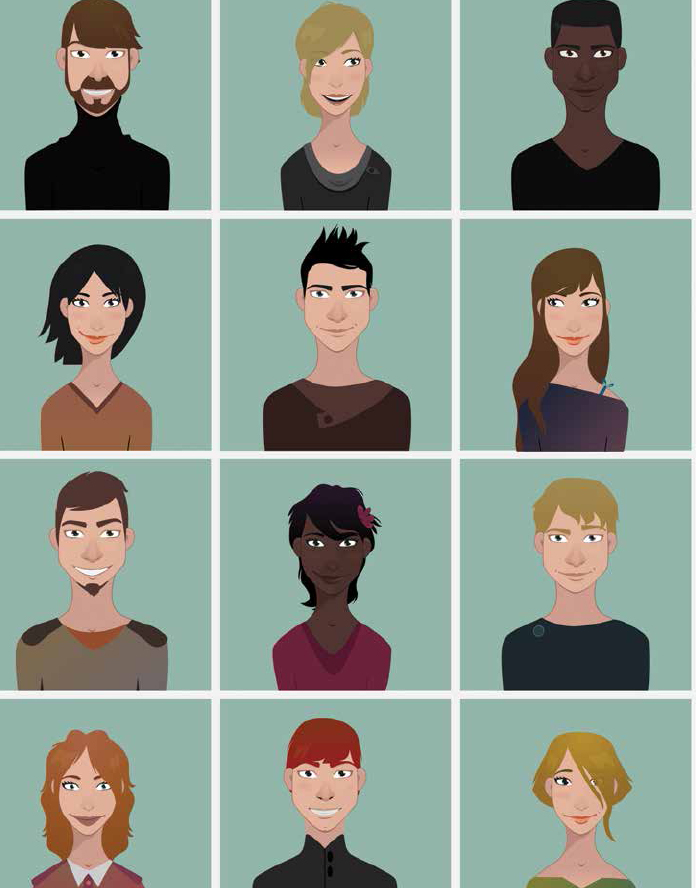
Words to Understand

spectrum: A wide range of something, stretching from one extreme to the other.
philosophers: People who think deeply about ethics, the mind, the universe, or the meaning of life.
empathy: The ability to understand and share in others feelings.
evolutionary: Having to do with the process by which organisms change and develop over many generations.
species: A certain kind of organism that can produce offspring with others of the same kind.
genetic: Having to do with DNA, the code inside our cells that determines what characteristics we have.
psychologists: Experts who study the human mind and emotions.
cognitive: Having to do with knowledge and thought.
appraisal: The act of evaluating or assessing someone or something.
theory: A suggested explanation for something, supported by scientific evidence.
neurologists: Doctors or scientists who study the brain and nerves.
optimism: A feeling of hope or confidence in the future.
You get up in the morning and look out the window. The sun is shining and you remember that today youre going to see your girlfriend. The thought makes you smile, and you find yourself humming as you take your shower and get ready for school.
When you go downstairs to eat breakfast, though, you discover that your little brother has drank the last of the orange juice and the milk, so theres only water to drink with your toast. Your good mood fades. Why did you let him drink it all? you snap at your mother.
Your brother and you pile in the car for the drive to school. Youre still feeling annoyed with both your brother and your mother, so you look out the window and dont join in their conversation. Suddenly, your mother slams on the breaks. What the! you shout.
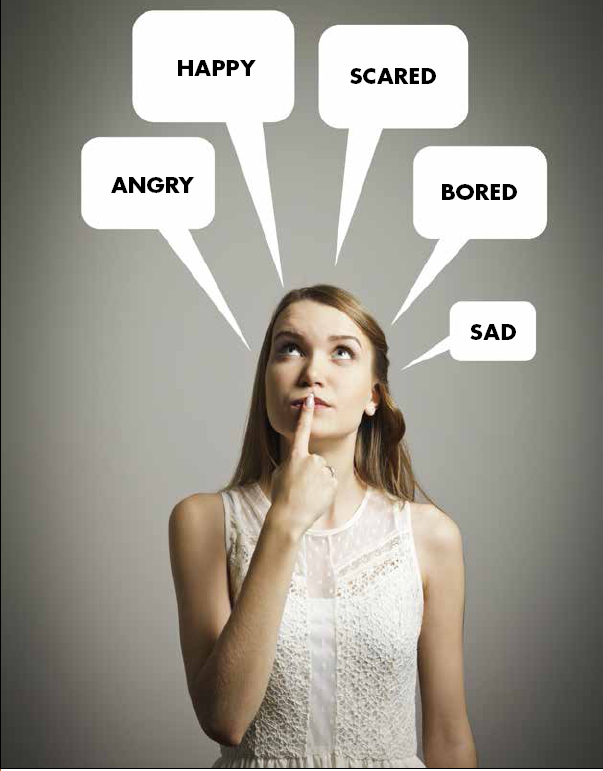
You have many emotions every day!
Make Connections

Experts say that people feel only 6 main emotionshappiness, surprise, fear, sadness, disgust, and angerand that all the other emotions we experience are some sort of combination or variation of these.
There are more than 600 words in the English language used to describe emotions.
We use 42 muscles in our faces to express emotions.
A truck has pulled out in front of you, and now your mother is struggling to control the car as she swerves to keep from running into the back of the truck. The car ends up on the side of the road in the ditch. Luckily, no one is hurt. Your heart is pounding and you realize you are shaking all over.
In the space of an hour, youve felt three emotions: happiness, anger, and fear. Before the day is over, you may feel a whole of other emotions, from sadness to embarrassment, surprise to disappointment.
Next page
